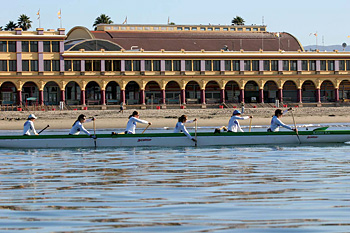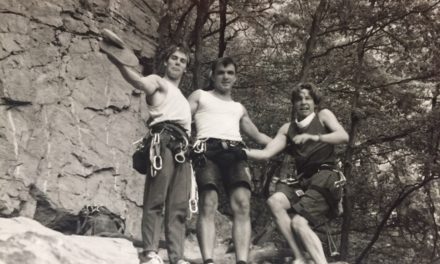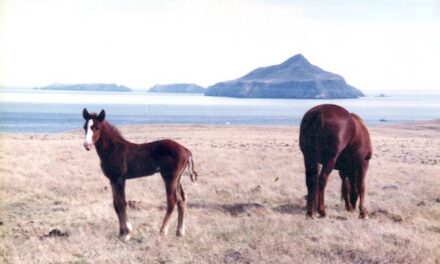- Tahoe’s Nevada Beach Tops the List of Hard-to-Book Campgrounds - 07/17/2024
- Cannabis Watershed Protection Program Cleans Up Illegal Grow Sites - 07/10/2024
- French Fire - 07/05/2024

Mendocino to Lake Tahoe, Nor Cal now home to 20 outrigger canoe clubs
By Pete Gauvin • Photos by Corlyce M. Olivieri
By day, Tony Francis is the manager of a group of technical writers for Apple Computer. After hours, he’s an avid outrigger paddler and president of the Akau Hana outrigger Canoe Club in Santa Cruz, one of 20 such Northern California clubs from Monterey to Mendocino to Lake Tahoe.
Tony and his wife Jeri Ann, both 53, got involved six years ago.
“I loved to surf and be on the water, and in summer when the swell got small, my wife and I were looking for a sport to do together. We tried sailing and sea kayaking … and then tried outrigger paddling. We enjoyed the teamwork aspect to it and the competition, and it’s a sport that we could do together, men and women. It’s a great family sport.”
Indeed, it’s an extended family, as well, one that just keeps growing as more people discover that outrigger paddling is a vigorous full-body workout that comes with a welcoming Aloha spirit of camaraderie and community, what Hawaiians would term “ohana.”
“Our club in Santa Cruz, less than three years ago had 27 people in it,” says Francis. “Now we have over a hundred.”
The club now puts three women’s crews (6-person teams) and two men’s crews in 10 to 12 races a season. Many of the club members also participate in OC1 (solo outrigger canoes), OC2 (two-person), and surf ski (kayak-style sit-on-top craft sans outrigger pontoons) races, notably with the WaveChaser Paddle Series (www.Wavechaser.com) in the Bay Area and Santa Cruz.
History
One of the oldest sports in existence, outrigger canoeing has been practiced for more than 5000 years. A thousand years before Columbus landed in America, Polynesians navigated the South Pacific in outriggers. Outrigger canoe racing is popular in many Pacific Rim countries. Modern clubs were founded in Hawaii during the early 1900s.
It made its way to California in 1959, when Toots Minville, a pioneer of outrigger canoe racing started the Newport Beach to Catalina race. The sport came officially to Northern California in 1978, with the founding of the Northern California Outrigger Canoe Association (www.NCOCA.com), which now consists of 20 clubs. The clubs paddle on nearly every large body of water in the region, including the ocean and San Francisco Bay, numerous lakes, the Petaluma and Sacramento rivers, and the north and south shores of Lake Tahoe.
Competition
Paddlers race throughout the year in distances ranging from 500-yard sprints to 40-plus mile endurance events.
Last summer, the NCOCA hosted the World Sprint Championships at Lake Natoma in Sacramento. Elite teams from around the world participated. Crews came from New Zealand, Australia, Fiji, Tahiti, Hawaii, France, Germany, Italy, Canada, and multiple U.S. states, including New York and Texas.
An NCOCA club from Sacramento, Hui O Hawaii, fielded a men’s Senior Master crew and a women’s Senior Master crew, each of which finished first in the world.
The most competitive crews paddle for the San Francisco Outrigger Canoe Club, says Francis, although clubs from Redwood City, Marin, Sacramento, Santa Cruz and other cities have highly competitive crews, too.
“The competitions are fun and inclusive, with age classes ranging from children to great grandparents, and with male, female, and coed divisions,” says Francis. Teamwork is key. “Every seat position in a six-person crew has a distinct responsibility and skill requirement, and every member of the crew relies on every other member to uphold their responsibility in the boat.”
Nature and Adventure
In addition to the highly competitive aspects, outrigger crews enjoy paddling in the natural elements, the opportunity to see wildlife including whales, sea lions, and dolphins without mechanical interference, and the rush of catching a surf on rolling ocean swells.
There are also some unique outrigger expeditions. Last August, a group of paddlers from Santa Cruz joined a group of Hawaiian and other California paddlers on an open ocean crossing, paddling 480 miles in 73 hours to Kure Atoll on the final leg of a journey connecting all of the islands in the Hawaiian chain.
Community and Culture
The NCOCA and its member clubs are all nonprofit organizations.
“There’s not much commercial backing or sponsorship,” says Francis. “Outrigger canoe paddling is our passion, and we love to share it with our family, friends, and communities. It’s part of the spirit of the outrigger culture that all these people spend all this time and energy to make it happen, organize training and races and community events … and then are literally pulling the water together.”
Cultural interaction with the Pacific Islands is a fun and important aspect of outrigger canoeing. The clubs regularly host luaus, Polynesian dance performances, Hawaiian music festivals, and other events.
“Hawaii-ana – the music, dance and sports – is an appealing element for a lot of OC paddlers,” says Francis. “The California OC clubs really have a huge cultural connection with Hawaii, as well as Polynesia, Tahiti and Tonga.”
Join the Mix
There’s plenty of opportunity for outrigger neophytes to get into the mix. Most clubs have at least one training session a week that is open to newcomers. For Akau Hana in Santa Cruz, it’s Sunday at 9 a.m.
“It’s an activity that everybody in the family can participate in,” Francis stresses. “Most clubs have programs for people interested simply in recreation and fitness along with programs for people interested in world-class competition. Most NCOCA clubs have programs for children, and some clubs have programs for physically disabled paddlers.”
Northern California Outrigger Canoe Clubs
- Akau Hana Outrigger Canoe Club
637 Marnell Ave., Santa Cruz, CA 95065
Site location in Santa Cruz
- Ho’okahi Pu’uwai Outrigger Canoe Club
PO Box 4308. Foster City, CA 94404
Site locations in Foster City and San Mateo
- Hui Wa’a Canoe and Kayak
1450 Maple Street, Redwood City, CA 94063
650-670-7108
Site location in Redwood City
- Kamali’i ‘O Ke Kai Outrigger Canoe Club
PO Box 612791, San Jose, CA 95161
Site location in San Jose
- Ke Kai O’Uhane OCC
PO Box 270, Marina, CA 93933-0270
831-645-4707 or 831-759-3507
Site location in Monterey
- Lokahi Outrigger Canoe Club
1063 Daniel Dr., Petaluma, 94954
707-765-9152
- Makana Hoe Outrigger Canoe Club
zipitandpaddle@yahoo.com, roovigillupo@yahoo.com
916- 221-1269, 916-606-9335
Site location in Sacramento
- Monterey Bay Outrigger Canoe Club
info@mbocc.com, jcastro414@aol.com, nanigirl54@aol.com
831-754-3212, 831-626-4205
- O Kalani Outrigger Canoe Club
Jack London Aquatic Center, 115 Embarcadero, Oakland, CA.
510 337-4970, 925 200-1623
- Tamalpais Outrigger Canoe Club
P.O. Box 891, Sausalito, CA 94966
415-272-6487
- Pu Pu O’ Hawai’i Outrigger Canoe Club
408-371-0136, 408-981-3717
Site locations in Santa Cruz and Los Gatos
- Benicia Outrigger Canoe Club
707-745-8206, 707-567-8206
- He’e Nalu Outrigger Canoe Club
14 E. Sir Francis Drake Blvd., Box 13, Larkspur, CA 94939
Site location in Larkspur
- Hui O Hawai’i of Sacramento
P.O. Box 2366, Citrus Heights, CA 95611
paddling@huiohawaiisacramento.org
916-782-4611
- Kaimanu Outrigger Canoe Club
732 Central Avenue #21, Alameda, CA 94501
408-757-8807
Site location in San Leandro
- Kawai’ulu O Tahoe
plaud@cebridge.net, suenorman2000@yahoo.com
530-582-9593, 530-400-9888
Site locations in Donner Lake and South Lake Tahoe
- Kilohana Outrigger Canoe Club
6486 Jasmine Ave., Newark, CA 94560
Site locations in Redwood City and Fremont
- Mendocino Outrigger
Albion, CA
707-542-4408, 707-882-2484
- Ohana Wa’a
256 Allan Ave., Rohnert Park, CA 94928
707-793-0198
Site location in Petaluma
- San Francisco Outrigger Canoe Center
363 Catherine Drive, South San Francisco, CA 94080
650-589-3685













